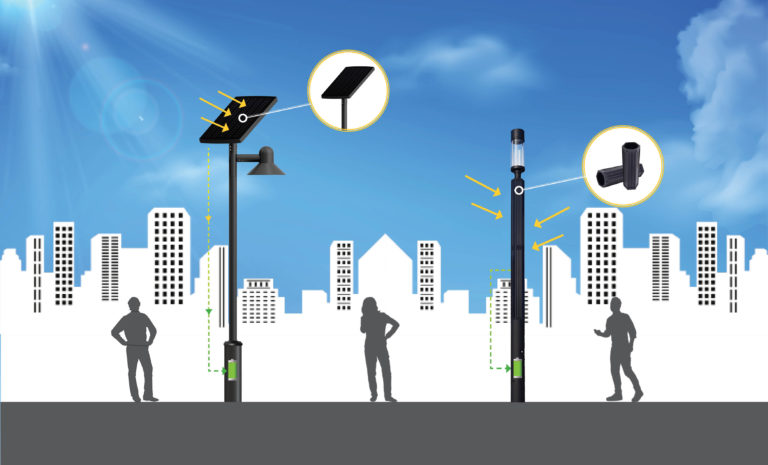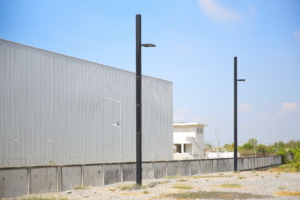
Climate change is the global concern for this generation and generations of the future. Weather and temperature extremes are becoming more pronounced, and the consequences of this continuing are already being felt around the world. Phasing out fossil fuels and moving towards sustainable, renewable energy practices, is one way that climate change can be curbed and potentially reversed. But many industries are looking at their own ways of innovating, rather than waiting for governments and power companies to make these dramatic changes.
By utilising the power of the sun, the lighting industry is developing ways of harnessing this energy during the day to power luminaires at night. This energy independence, having no reliance on the utility grid electricity, is a wholistic approach to improving energy efficiency. We may reach a point in the future where street lighting no longer requires on-grid power, producing their own electricity from solar power, saving both energy and associated energy costs.

On-grid and Off-grid solar system
FAQ
A: Street lighting and wide open spaces with expanses of exterior lighting will benefit from solar integrated luminaires, as their main energy load is taken by the lighting. When the lighting can generate its own electricity, it reduces the overall demand on the installation.
A: Depending on the size of the city, where it is located and various other factors, street lighting on average consumes 40% of a cities energy budget. Meaning that solar integrated luminaires can potentially save almost half of the energy needed by the local government.
